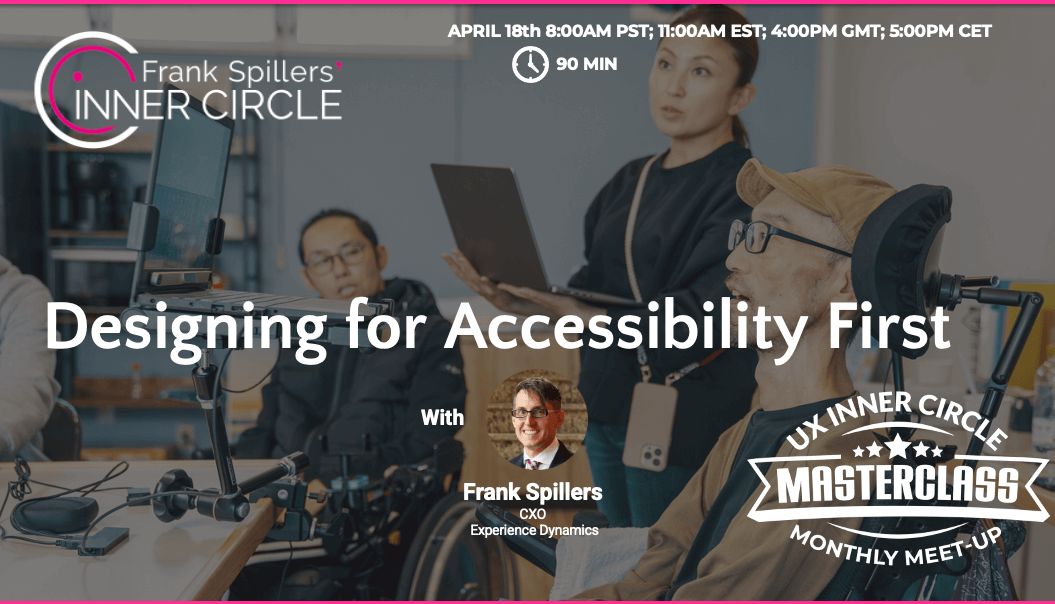Designing for Accessibility First

APRIL 18th 8:00AM PDT; 11:00AM EDT; 4:00 PM BST; 5:00 PM CET
90 min
- Cost: Buy this course and attend it live or get the recording for only $100 USD; €93.00 EUR; £79.00 GBP:
- Free for UX Inner Circle Members–Join now, cancel anytime
Designing for Accessibility First
Typically, accessibility isn’t first, it’s last. It gets taken care of after the design is complete. In many cases where developers drive accessibility efforts, it is exclusively a post-design and often post-code technical task. That makes it too late to design for the “right problem” in accessibility.
Why? The problem is that for years the industry has thought of accessibility as a technical vs Inclusive Design activity.
Yes, you can design accessibility
Prioritizing accessibility from the start improves development. It lets developers see and fix potential issues early, saving time and costs. This method makes products inclusive from the beginning.
Users with disabilities, such as neurodiverse or blind users, may require a different type of content or experience. Yet with the “one size fits all” approach, this misses connecting with audience needs.
Designing with accessibility in mind changes will change how you think about accessibility.
We need to get beyond a compliance mentality
To design for accessibility, users with disabilities must be involved. User Research with users with disabilities is critical. But the reality? It’s hardly done.
Join this upcoming User Research Intensive, where you’ll work with neurodiverse users.
Integrating accessibility from the onset of design is not just about compliance or ticking boxes; it fundamentally transforms the development process and product outcome for the better. By prioritizing accessibility at the design stage, developers and designers can foresee and address potential barriers, significantly reducing the need for time-consuming revisions later.
What accessibility gets wrong: Doing design and development and then retrofitting content by making everything carte blanche accessible. Instead, we need to understand users with disabilities, their access barriers, needs, and preferences and build that into the design phase. This Masterclass is about learning how to do that.
This approach minimizes development time and ensures that the product is inherently more inclusive, providing an equitable user experience for people with disabilities from the start.
Why this matters:
Making products accessible from the start simplifies how you tackle accessibility later. Taking a proactive approach means you can more thoughtfully consider the needs of users with disabilities. Instead of hurriedly optimizing accessibility to meet guidelines, you can shape an experience that’s more suitable, desirable, and equitable.
What you’ll learn: Designing for Accessibility First
In this 90-minute Masterclass, you will understand how to approach Accessibility as a Design task. We’ll start with a “palette” of Accessibility needs (from User Research) and walk through how to translate access issues into design features.
- Assessing Accessibility Needs
- Identifying and Anticipating Accessibility Needs
- Designing for Specific Disabilities
- Activity: Translating user research-informed access issues into design features
About Monthly MasterClasses:
These monthly meet-ups are topic-driven live events with an informal presentation by Frank Spillers and group activities and discussions. Monthly MasterClasses are included as part of your membership. They allow a deep dive into important UX topics, with insights drawn from process best practices and case studies from Frank’s two decades in the field.
Cost:
Not a member? $100
Members: FREE…join the UX Inner Circle to get this and enjoy access to $10,385 worth of value-recording trainings from 20 years of Frank Spillers’ work.
- Cost: Buy this course and attend it live or get the recording for only $100 USD:
- Free for UX Inner Circle Members–Join now, cancel anytime
| Date: | 18 Apr 2024 |
|---|---|
| Time: | 08:00 am PST 11:00 am EST 04:00 pm GMT 05:00 pm CET |
| Check Your Timezone | |



